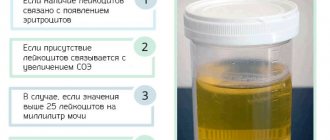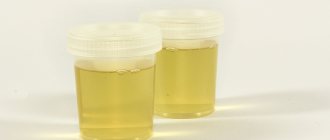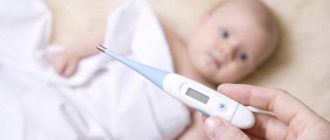Today we are looking into the concept of mucus in a child’s urine, what it means, and how to treat this condition. Even if the baby does not complain of problems with urination, tests should be taken periodically to prevent his health. Laboratory tests are carried out before vaccinations in order to exclude their side effects. Collecting urine for analysis is a completely painless procedure and will not cause discomfort for the baby.
A general urine analysis includes a list of physical and chemical parameters of the biomaterial being studied, as well as its microscopic examination. One of the indicators that is indicated on the results form is mucus in the urine. Should you be scared and what does mucus in a child’s urine mean? Let’s take a closer look.
How to detect mucus in urine?
You can independently detect the mucous secretion in the baby’s urine when the amount is large enough. This condition often accompanies urinary tract infections. For early diagnosis of diseases, laboratory tests should be taken on time. A general blood test and urine test are standard and are included in the set of mandatory tests for any visit to a pediatrician.
The presence of mucus in the urine is determined during a general analysis. Urine is a waste product. It is excreted by the kidneys after filtration in the glomeruli.
The study evaluates the functional activity of the kidneys and metabolic processes in the body, and allows us to determine the effectiveness of the chosen treatment tactics. Using a general urine test, it is possible to establish the fact of inflammation, including hidden inflammation, as well as a number of other diseases.
Of particular danger are diseases that have a long latent period and are not detected by a typical clinical picture. This once again emphasizes the importance of simple mandatory research.
How to prepare your baby for research?
Before collecting biomaterial for analysis, you should not fundamentally change the rhythm and diet of a small patient. On the eve of the visit to the laboratory department, it is necessary to ensure that the child does not experience physical or emotional stress. It is better to skip sports training in the evening.
Fatty and highly salted foods, especially fast food and sweet carbonated drinks, should be removed from your baby’s diet. Foods that affect the color of urine, such as beets, should be avoided.
By prior agreement with the doctor, taking any medications is excluded for 24 hours. If it is impossible to cancel mandatory medications, you should inform the laboratory employee about their use. Collecting biomaterial using diuretics is prohibited.
How much and how to properly collect urine from a child?
For accurate results, it is necessary to carefully consider the issue of collecting and transporting biomaterial. The first or middle portion of morning urine is collected (as indicated in the directions). It is first necessary to toilet the baby's external genitalia. In infants, it is permissible to collect the entire excreted portion of urine. To collect biomaterial from infants, pharmacies sell special devices - a urine collector. It should be noted that such a device causes discomfort for the baby. Therefore, it is important to ensure that the child does not throw it off and that all urine is collected directly into the urine collection bag.
Older children should be clearly explained the rules for collecting the average portion: urinate in the toilet for 2-3 seconds, then in a jar, and the last portion in the toilet.
What not to do? It is strictly forbidden to collect biomaterial from a baby diaper, squeeze it out or drain it. In this case, foreign particles enter the urine, which will distort the reliability of the laboratory analysis results. It is also unacceptable to collect several portions of urine, believing that one will not be enough.
The required volume for the study is 20-30 ml. Therefore, the amount that the baby naturally secretes will be sufficient. It is optimal that no more than two hours pass from the moment of collection and delivery to the laboratory department. In this case, the results obtained will be accurate and will allow you to reliably assess the health picture of a small patient.
Collecting biomaterial from a child's potty should be avoided because it may not have been sufficiently washed or may contain detergent impurities. The collection container is a special sterile jar, which is issued free of charge in the laboratory department or purchased at the pharmacy.
What is detected along with the mucus?
In diagnosing diseases of a child, it is important to simultaneously identify in the sediment the following with mucus:
- squirrel,
- leukocytes,
- erythrocytes,
- bacteria, bacteria
- epithelial cells,
- salt crystals.
Bacteria and leukocytes, when collected correctly, always indicate inflammation. Confirmation is provided by the Nechiporenko analysis with the calculation of leukocytes, casts and red blood cells in one ml of urine. To identify a specific pathogen, bacteriological examination and culture on nutrient media are prescribed.
The content of red blood cells and protein is characteristic of severe impairment of the filtration function of the renal glomeruli. These elements do not normally pass through the membrane. The appearance speaks of her inferiority. Most often observed with glomerulonephritis.
The composition of salts depends on the child’s nutrition. They do not necessarily reflect pathology. You should ask your pediatrician about the required diet and adhere to its restrictions.
What does mucus in a child's urine mean?
Important: small amounts of mucus in a child’s urine is a variant of the physiological norm. If the lab results form says “trace or small amounts,” then there is no need to worry. Mucus is a natural waste product that is released when you urinate. It is formed by the mucous cells of the epithelium that lines the inner surface of the urinary organs. An insufficient amount of mucus can lead to mechanical damage to the mucosa.
Let's take a closer look at the reasons why mucus is found in large quantities in a child's urine.
Basic material on this topic: What diseases are indicated by mucus in urine in adults and children
Incorrect preparation for analysis
It is known that more than 60% of errors during laboratory analysis are made at the preparation stage. The first reason is improper collection and subsequent transportation of biomaterial. In order to exclude unreliable data, the pediatrician will prescribe a repeat study.
Phimosis
The detection of mucus in a general urine test in a boy may indicate phimosis. The pathology is characterized by the inability to fully open the head of the penis due to the foreskin being too narrow. It is noted that only 4% of newborn babies have a fully open glans penis. By six months, the percentage of boys with movable flesh reaches 20, and by three years, 90% of the head is completely exposed. Little boys with phimosis strain a lot during urination, and their discomfort is noticeable.
In this case, the mucus cannot be completely removed during hygiene procedures, and it ends up in the biomaterial for research. The need for surgical intervention is decided by the attending physician. Indications for surgery are inflammation of the tissues of the foreskin, cracks and ruptures of the phimosis ring, fusion of the tissues of the foreskin and the head of the penis.
Infection
Excessive mucus in the urine of infants and older children of both sexes is a sign of inflammation of the urinary system. Additional research will be required to accurately diagnose and identify the pathogen. Bacteriological urine culture will allow you to identify the pathogen, as well as isolate its pure culture and conduct a sensitivity test to the main antibiotics. Based on the results, the most active antibacterial drug is selected and used for therapy.
Depending on the location of the pathogen, the following are distinguished:
- urethritis - an infection that affects the urethra. It is more common in girls because the canal is located close to the anus. If hygiene is improper, infection may enter the urethra;
- cystitis - pathogenic microorganisms rise up the urethra and infect the bladder. Based on the physiological structure of the body, the disease also more often affects girls. Their urethra is shorter and the infection reaches the bladder faster;
- pyelonephritis – inflammation of the kidney tissue. The infection rises even higher and is localized in the renal pelvis. The child's body temperature rises and there is pain when urinating.
For a comprehensive examination, the doctor will prescribe instrumental diagnostic methods. Ultrasound of the kidneys will allow you to assess the functional activity of the renal tissues and detect the acute or chronic stage of pyelonephritis.
Using urography, you can evaluate the structure of the urinary organs, detect stones and other pathologies. The essence of the method is the introduction of a contrast agent followed by an x-ray.
If the above methods turned out to be insufficiently informative, then computed tomography and magnetic resonance imaging are prescribed. The research results provide more accurate and detailed data on the structure of the organs of the urinary system. It is possible to assess the extent of spread of the infectious process beyond the renal tissue to neighboring organs.
In girls, a common cause of mucus in the urine is vaginitis. In this case, when collecting material for analysis, vaginal mucus enters the urine.
Increased amount of salts
Excessive accumulation of salts is evidence of an incorrect regime and diet of the baby. You should review the menu and exclude fatty, highly salted and sweet foods from it. Preference should be given to lean meats, plenty of vegetables and fruits. It is equally important to follow a diet and try to prevent your child from snacking on sweets. Meals should be divided into equal ones in importance and nutritional value. Fresh fruit is allowed as a snack.
Reasons for the development of pathology
Discharge in a child's urine can occur for various reasons. These include hypothermia and failure to comply with hygiene rules. Factors that cause mucus in children's urine fall into two categories:
- Internal;
- External;
External factors include the following:
Recommended topic:
Normal protein in urine
- Violations of the rules of hygiene of the genital organs of the infant;
- Incorrect preparation for analysis or insufficient sterilization of the container in which the urine was collected and transferred to the laboratory;
- Untimely urination. This reason may be due to medication or due to forced urinary retention.
Internal and more serious reasons include the following:
Urine diagnostics
- Cystitis and urethritis, which caused inflammation of the urinary tract or disorders of the renal area;
- Phimosis. This disease involves the accumulation of mucous secretions, which are later excreted along with urine;
- Sometimes the causative agent of the disease is pyelonephritis or glomerulonephritis.
You can find out why there is mucus in your child’s urine only after undergoing a general analysis that will reveal the cause. Then treatment will be prescribed, it will eliminate the discharge, which will return the baby’s health to normal.
Urine with mucus in a child is also observed for natural reasons. In this case, drug intervention is not required. To avoid detection of secretions in urine, you will need to follow preventive measures. This means the following:
- Pay special attention to hygiene. Wash your child's genitals daily with warm water;
- Do not stay in the cold for a long time to avoid hypothermia, as this reason is the most common;
- Take your child to the toilet on time. This procedure will not allow urine to linger in the urinary canal, which will not cause the development of this disease;
- Complete general analysis on an ongoing basis. These measures will allow us to identify or exclude pathologies in the early stages of development.
Treatment methods
If a child has a small amount of mucus in the biomaterial being tested and there are no clinical signs of pathologies, the doctor will determine the need for proper nutrition and daily routine. After a few weeks, the study must be repeated and the value of the indicator assessed.
An infectious process of the urinary system requires the selection of antibacterial therapy. It is important to strictly adhere to the dosage and duration of treatment. When selecting an antibiotic, not only the sensitivity of pathogenic microorganisms is taken into account, but also contraindications. For many antibiotics, there is a minimum age for a child at which its use is acceptable. Therapy is considered successful after which the analysis results do not reveal a high content of mucus and the presence of pathogenic species of microorganisms.
Treatment methods for phimosis are determined by the pediatrician and surgeon. If there are no indications for surgery, procedures are prescribed to stretch the skin of the foreskin.
Important: it is unacceptable to independently choose methods of treating a child, including folk remedies. Any use of non-traditional methods must be previously agreed with the pediatrician. Neglecting the rule will lead to chronicity of the pathology and an increase in its severity.
Pathological
Pathological reasons that contribute to the formation of mucus in the urine of a child:
- infectious and inflammatory processes in the urinary system (cystitis, urethritis);
- narrowing of the foreskin in boys and vulvovaginitis in girls;
- structural and functional changes in the kidneys due to metabolic disorders;
- rarely detected in pyelonephritis, glomerulonephritis, interstitial nephritis.
If protein and mucus are detected in the child’s urine, which indicates the development of a pathological process in the kidneys, and if salt and mucus are detected in the child’s urine, we are talking about dysmetabolic disorders of kidney function.
Dysmetabolic disorders in the kidneys are associated with errors in diet, eating excessive amounts of protein-rich foods, citrus fruits, chocolate, and insufficient fluid intake.
All these violations in the diet in children lead to metabolic imbalance and the formation of salts in the child’s kidney tubules. When salts are released through the urinary tract, irritation of the mucous membrane and inflammation in the urinary system occur, which is reflected in the diagnosis of urine by the presence of salts, mucus and epithelium.
Mucus in the urine of an infant is possible due to the presence of the renal epithelium; in older children, this is considered a deviation from the norm. In infants, when mucus is detected in urine, diseases that lead to rejection of epithelial tissue are often diagnosed.
We invite you to familiarize yourself with the intonation of the poem:









